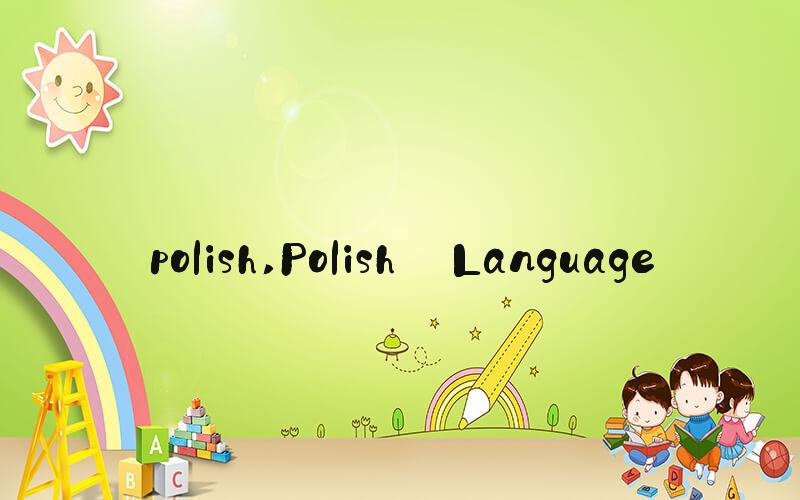
 Polish: A Guide to the Language, Culture, and History
Polish: A Guide to the Language, Culture, and HistoryPolish is a Slavic language spoken by approximately 50 million people worldwide, with the majority living in Poland. The language has a rich cultural history, having survived periods of occupation, cultural assimilation, and suppression in the past. To understand the Polish language, one must also delve into its culture and history. This guide aims to provide an overview of Polish language, culture, and history.
Polish LanguagePolish is a complex language with a unique set of grammar rules. It features seven cases, three genders, and a variety of inflections. Verbs are conjugated depending on tense, aspect, mood, and person. Pronunciation can be tricky for non-native speakers, with the language featuring a variety of consonant sounds that do not exist in English. Despite this complexity, Polish is considered a beautiful and poetic language.
Polish has also influenced other cultures and languages. Yiddish, for example, is heavily influenced by Polish. Many words in the English language also have Polish roots, such as "czar," "kowtow," and "pierogi."
Polish CulturePolish culture is rich and varied, with a mix of Slavic, Germanic, and Celtic influences. Poland has a long history of cultural expression in literature, music, art, and architecture. The country is also known for its delicious food, including pierogi, kielbasa, and borscht. Religion plays an important role in Polish culture, with the majority of Poles identifying as Roman Catholic. The country has also made significant contributions to science, with famous Polish scientists including Marie Curie and Nicolaus Copernicus.
Poland has had a tumultuous history, with periods of occupation, war, and suppression. Despite this, the country has managed to preserve its cultural identity, with festivals and events celebrating Polish heritage occurring throughout the year. The country has also produced many important figures in history, including King Jan III Sobieski, who led a crucial victory against the Ottoman Empire in the Battle of Vienna in 1683.
Polish HistoryPoland has a long and rich history, dating back to the 10th century. It was ruled by monarchs until the late 18th century, when it was partitioned by neighboring countries, including Prussia, Austria, and Russia. This period of occupation and suppression lasted for more than a century, until Poland regained its independence in 1918.
Poland suffered greatly during World War II, with the country occupied by Nazi Germany. The war had a profound impact on Polish culture and society, with many Poles fighting back against the occupation and forming resistance groups. The most famous of these groups was the Warsaw Uprising, which took place in 1944 and aimed to liberate the city from Nazi control. Despite the heroic efforts of the resistance fighters, the uprising failed, and the city was destroyed.
After the war, Poland came under Soviet influence, and was ruled by a communist government until 1989. This period of history is marked by suppression of dissent and restrictions on civil liberties. After the fall of the Soviet Union, Poland became a democratic nation, with free and fair elections. The country is now a member of the European Union and has undergone significant economic and social development in recent years.
ConclusionPolish language, culture, and history are intricately intertwined, with each element contributing to the rich tapestry that is Poland. The language may be complex, but it is also beautiful and evocative. The culture is characterized by resilience and a strong sense of identity, while the history features periods of great triumph and tragedy. Poland is a fascinating country, and one that deserves to be explored and appreciated.
